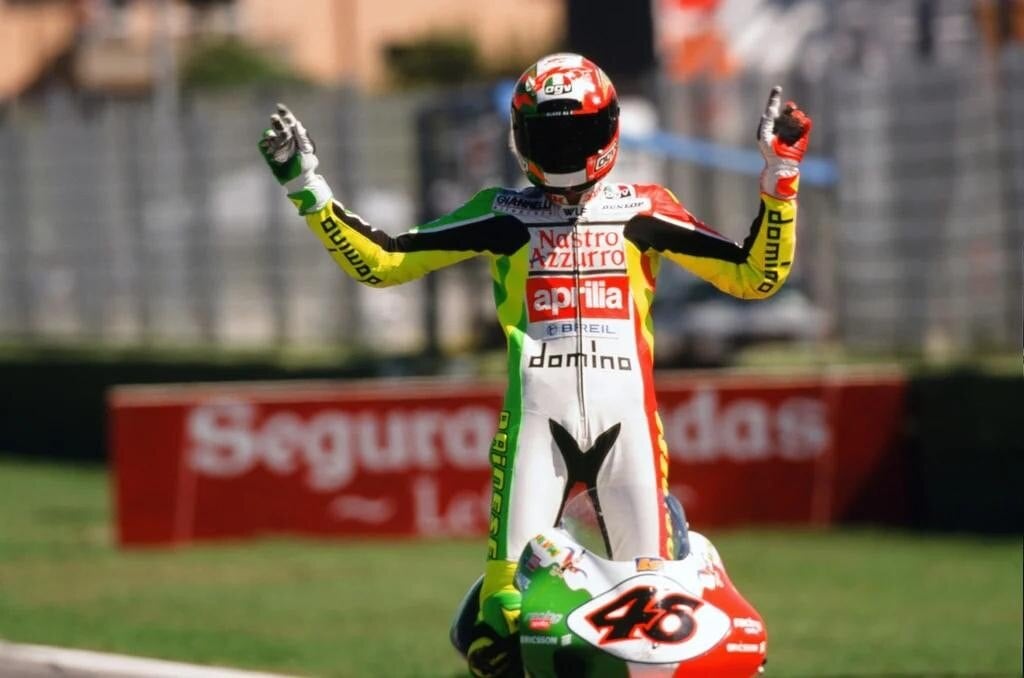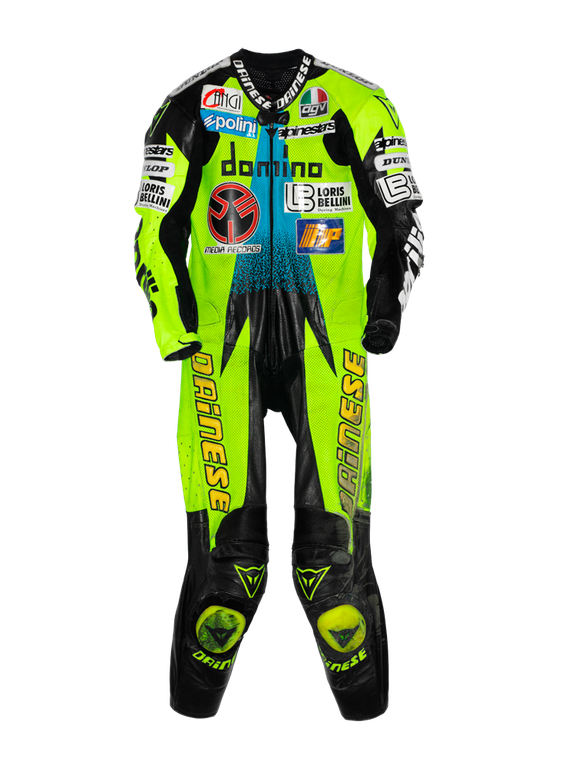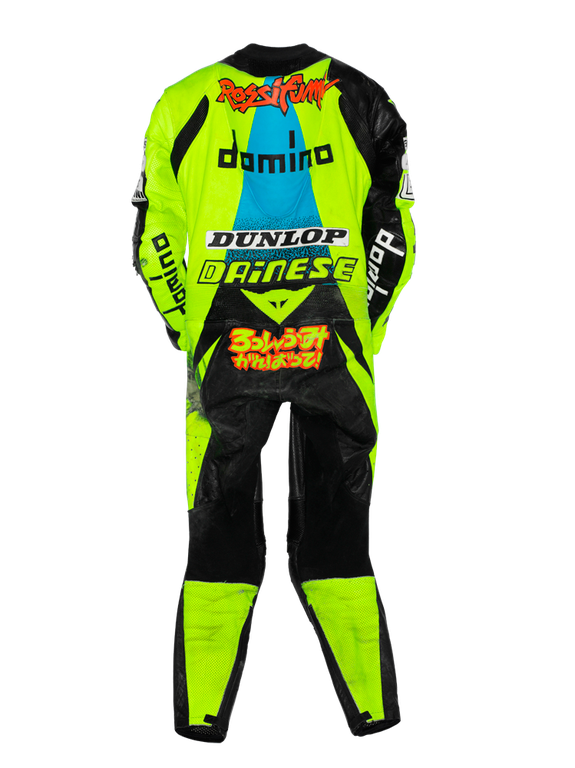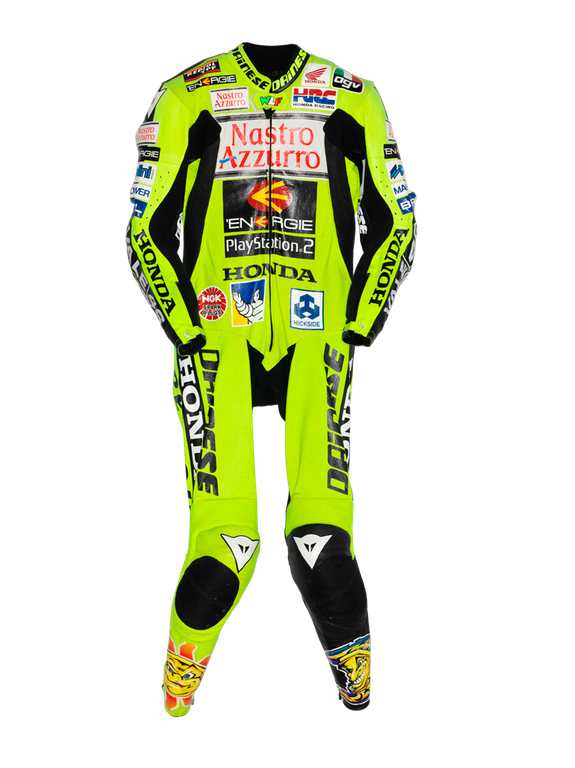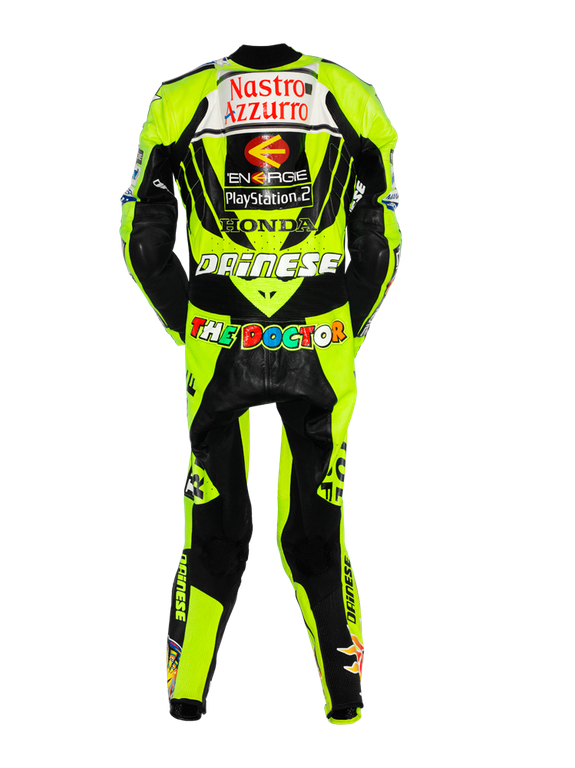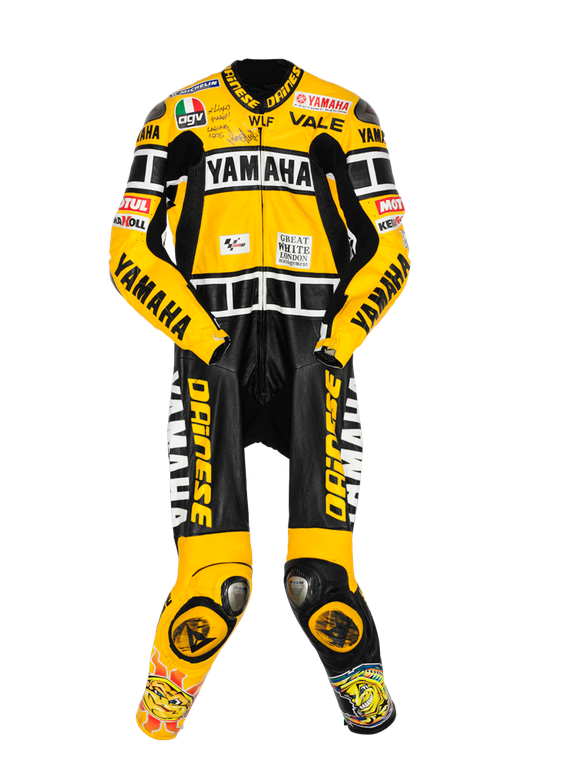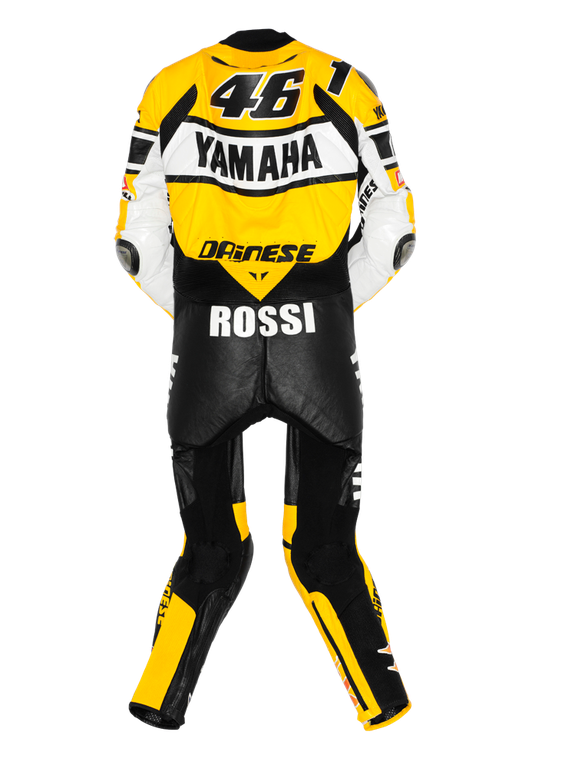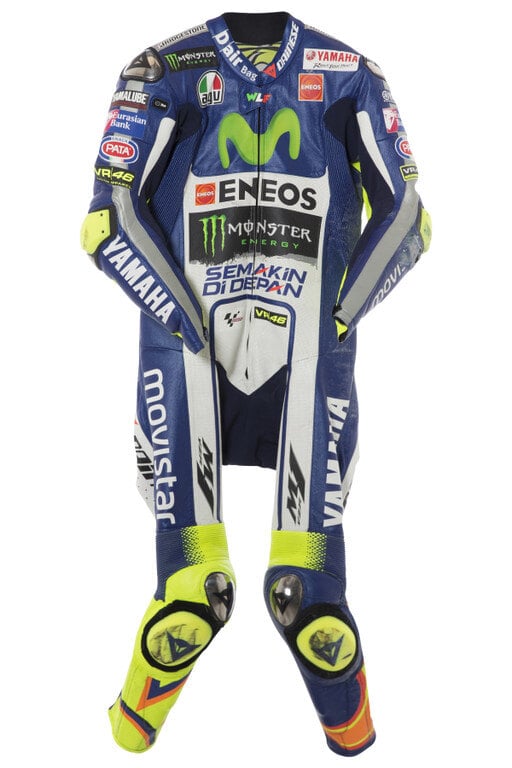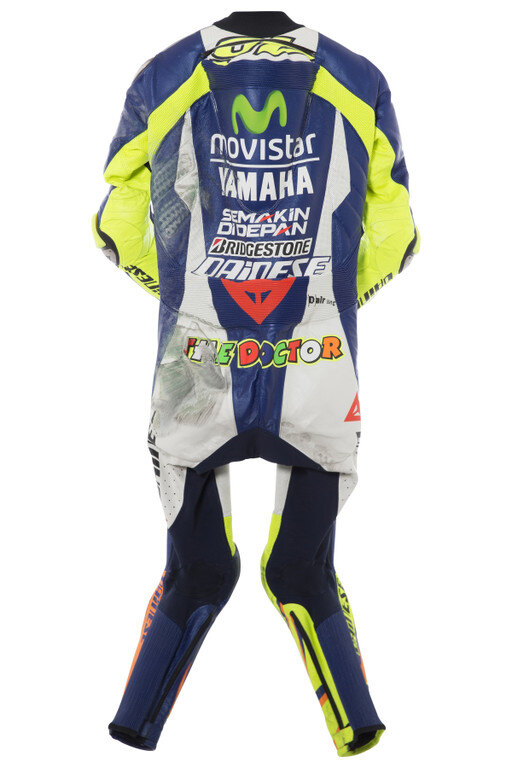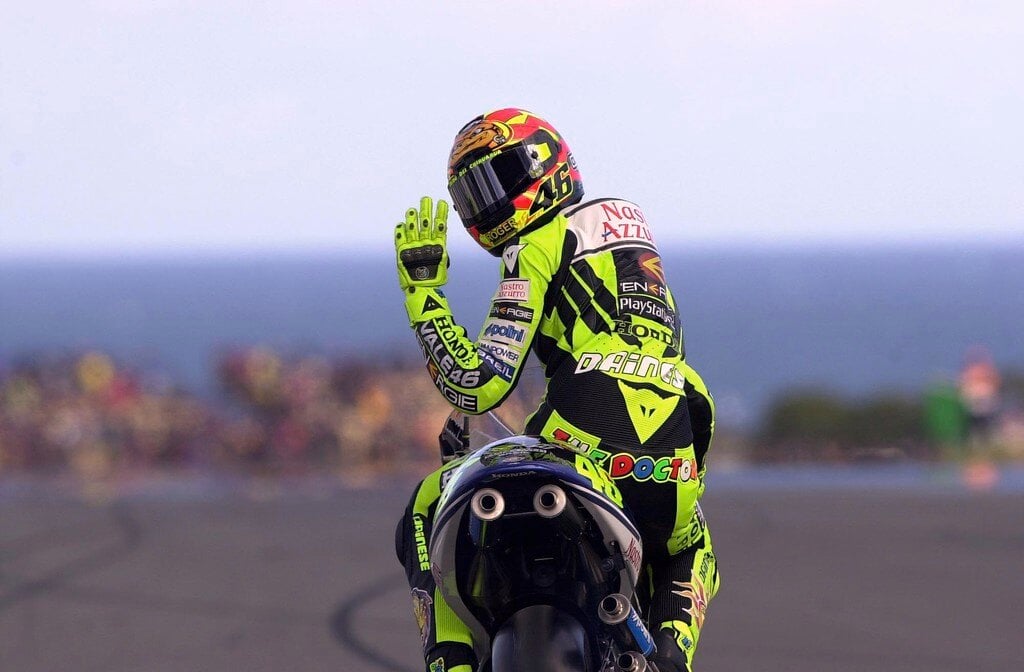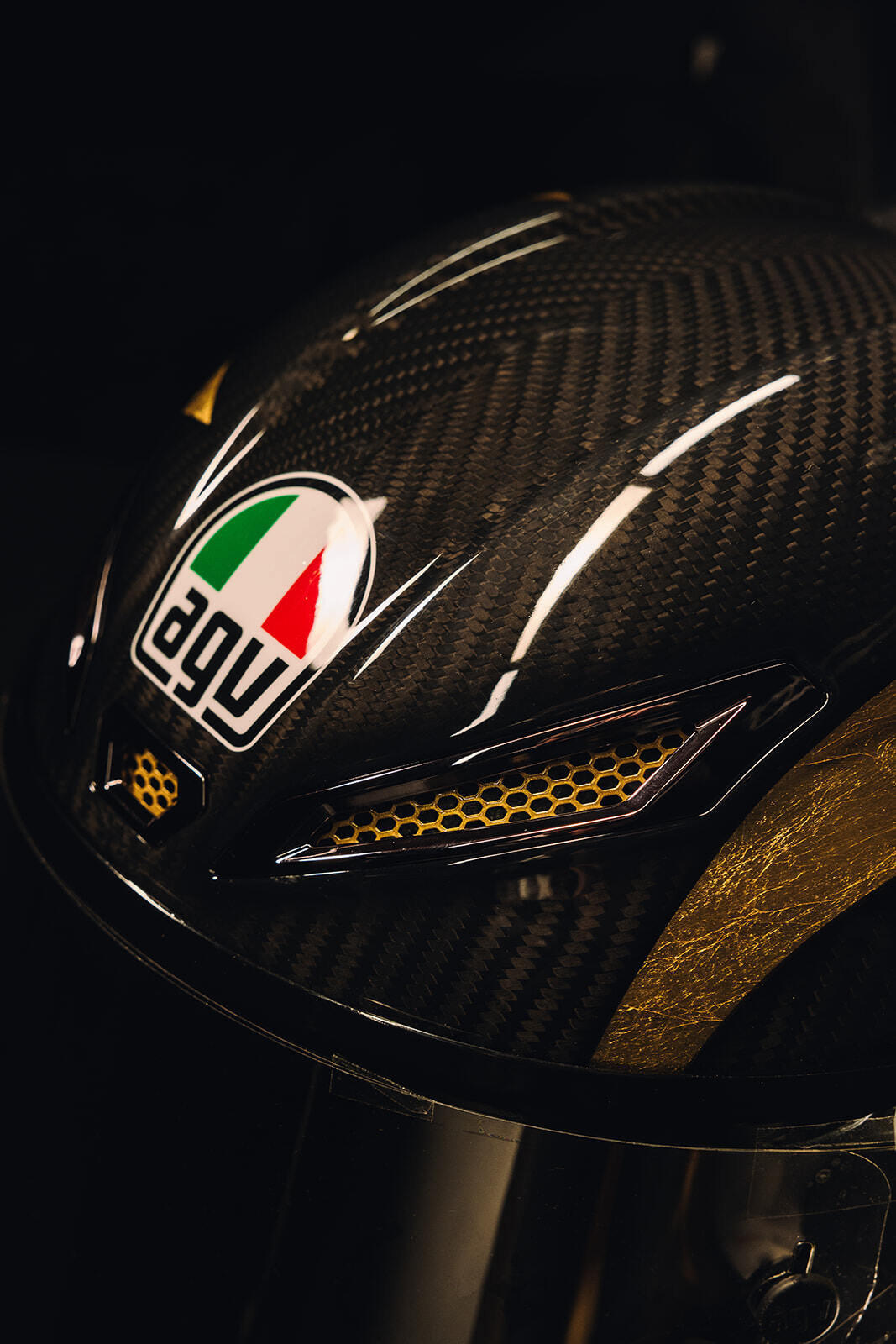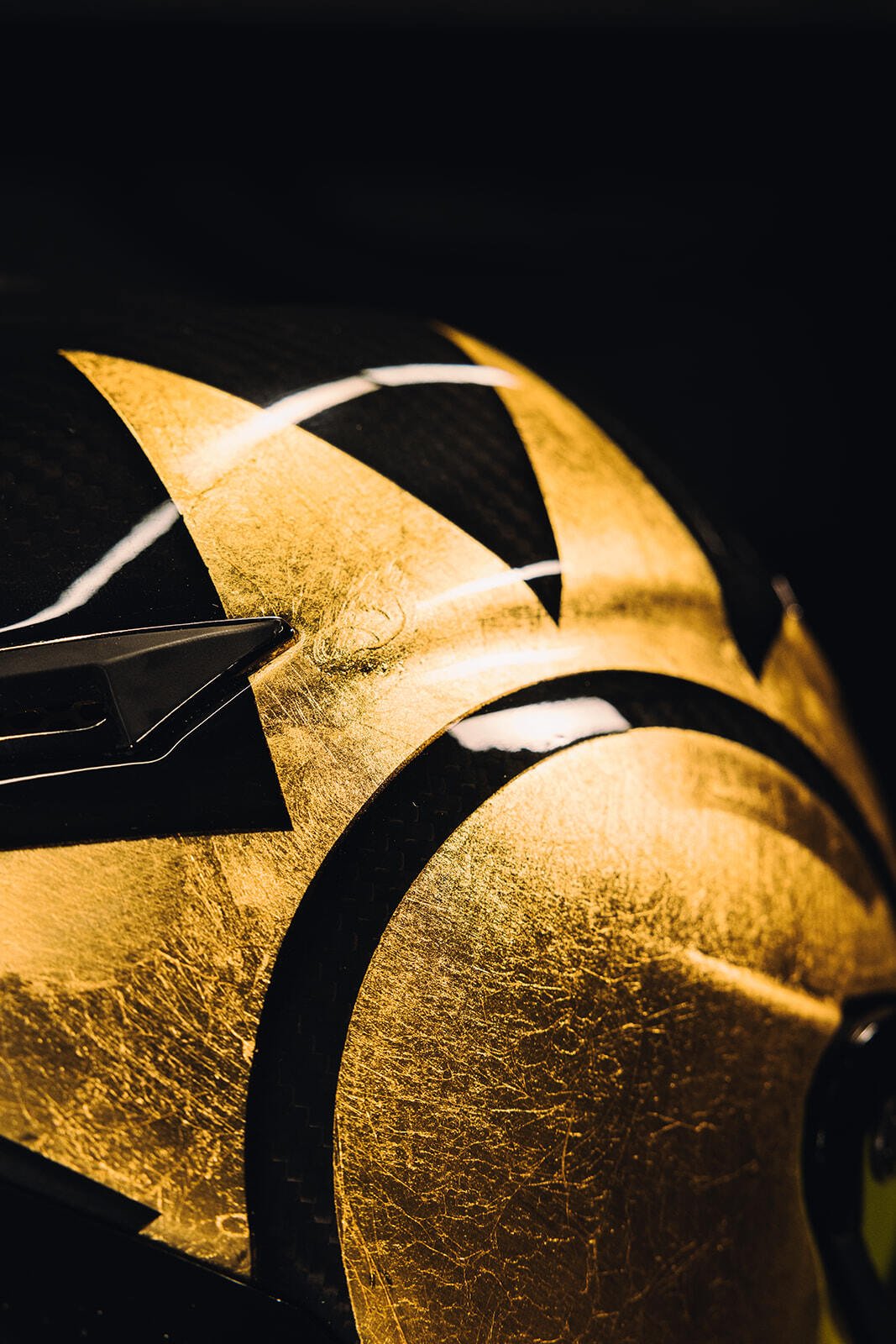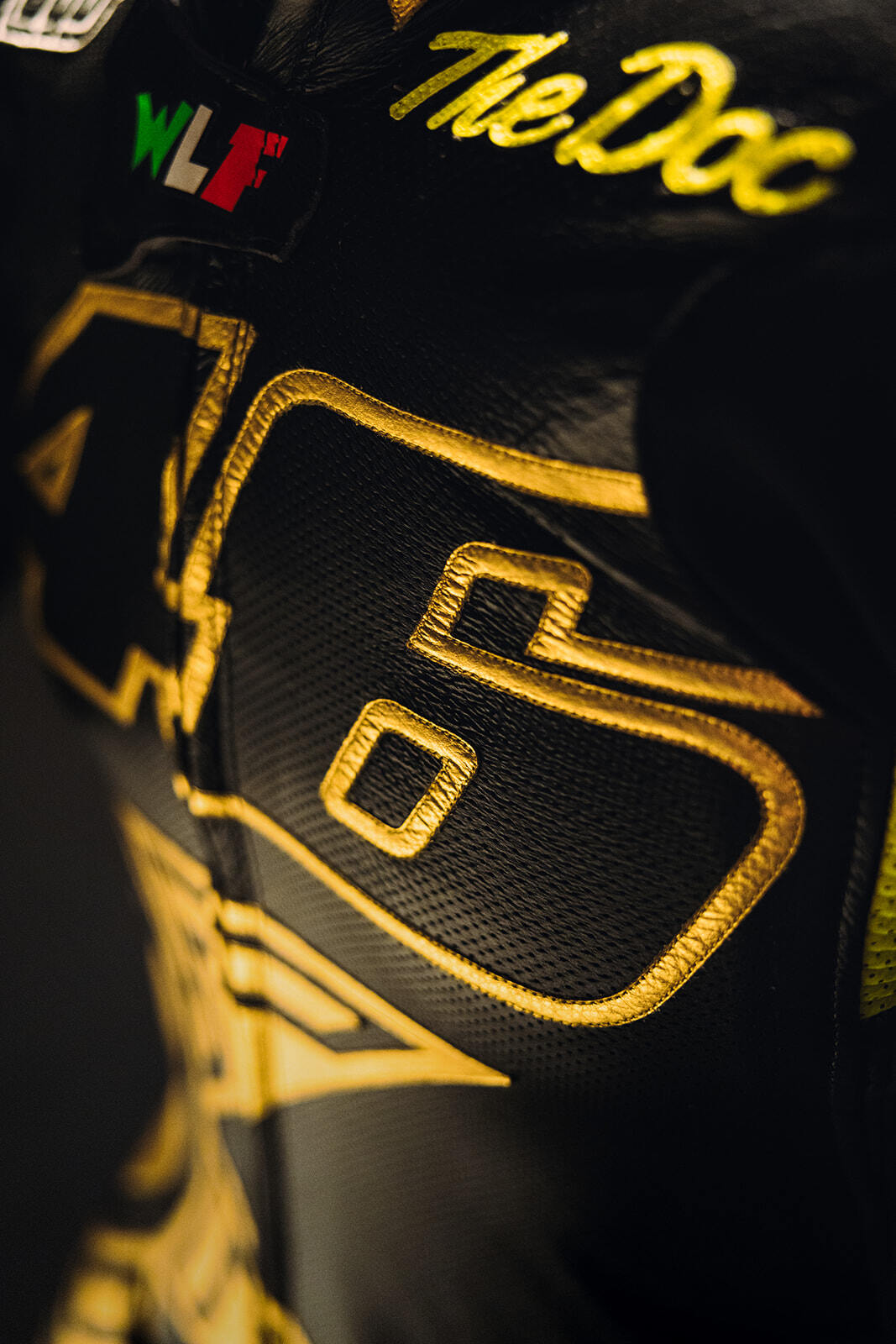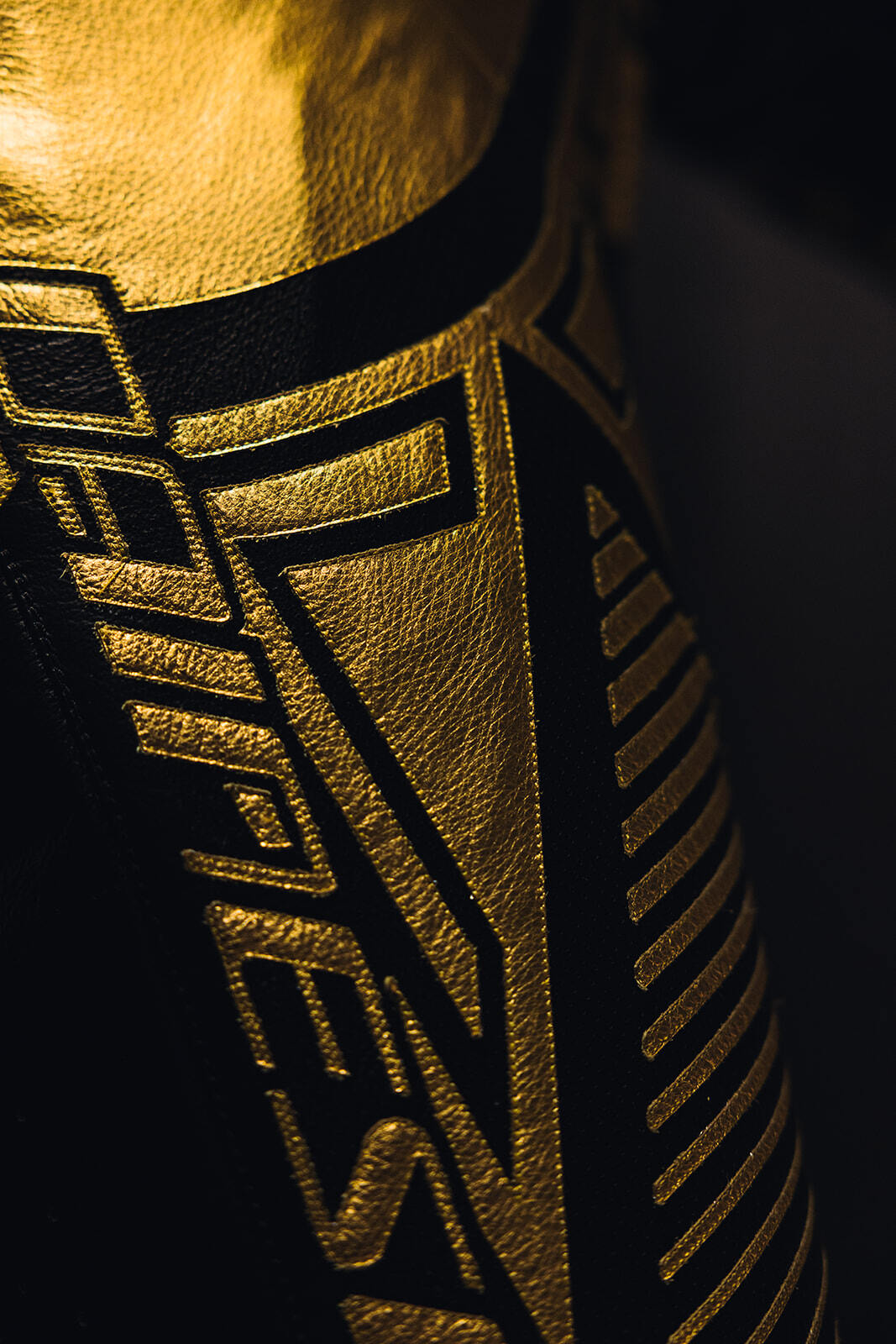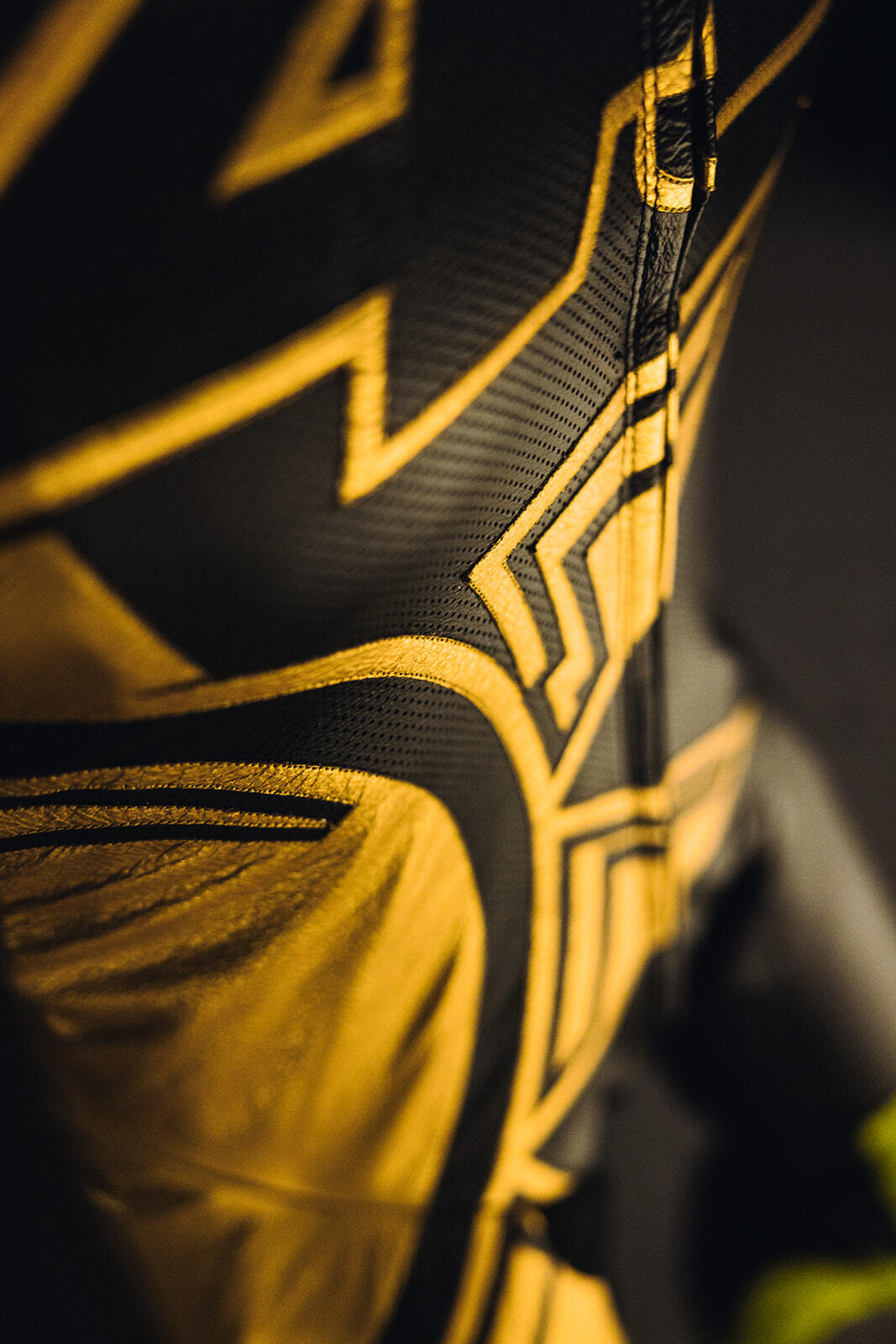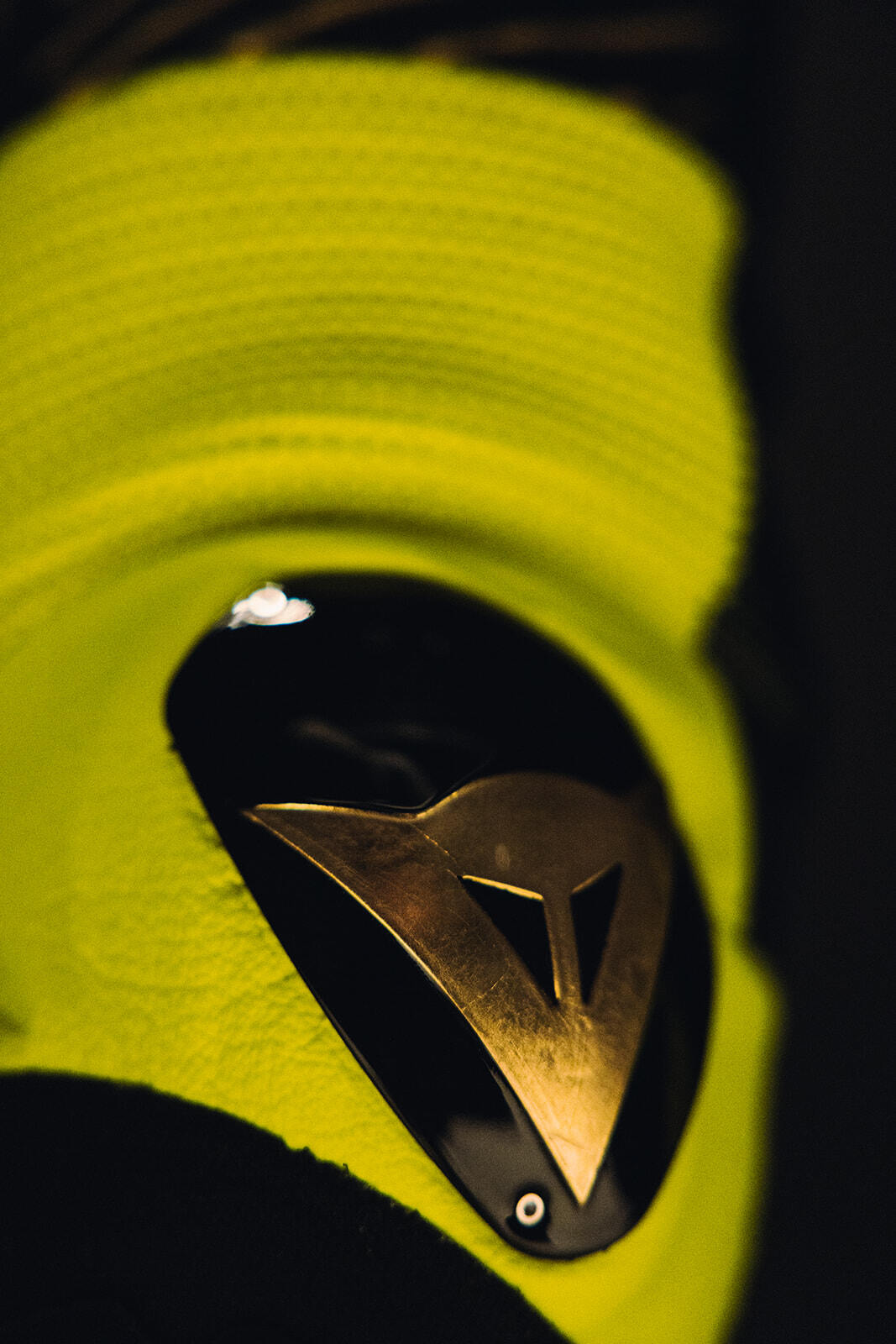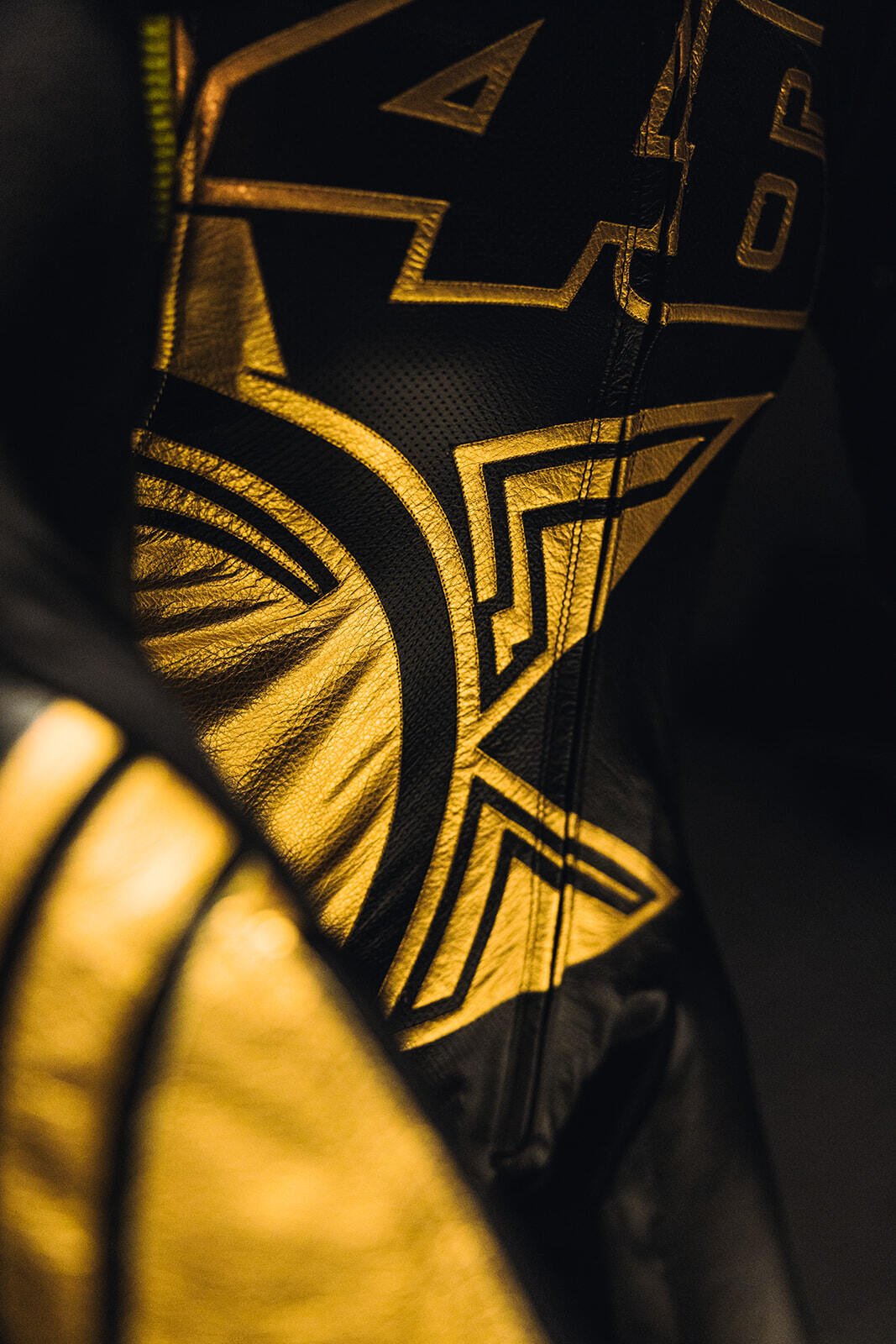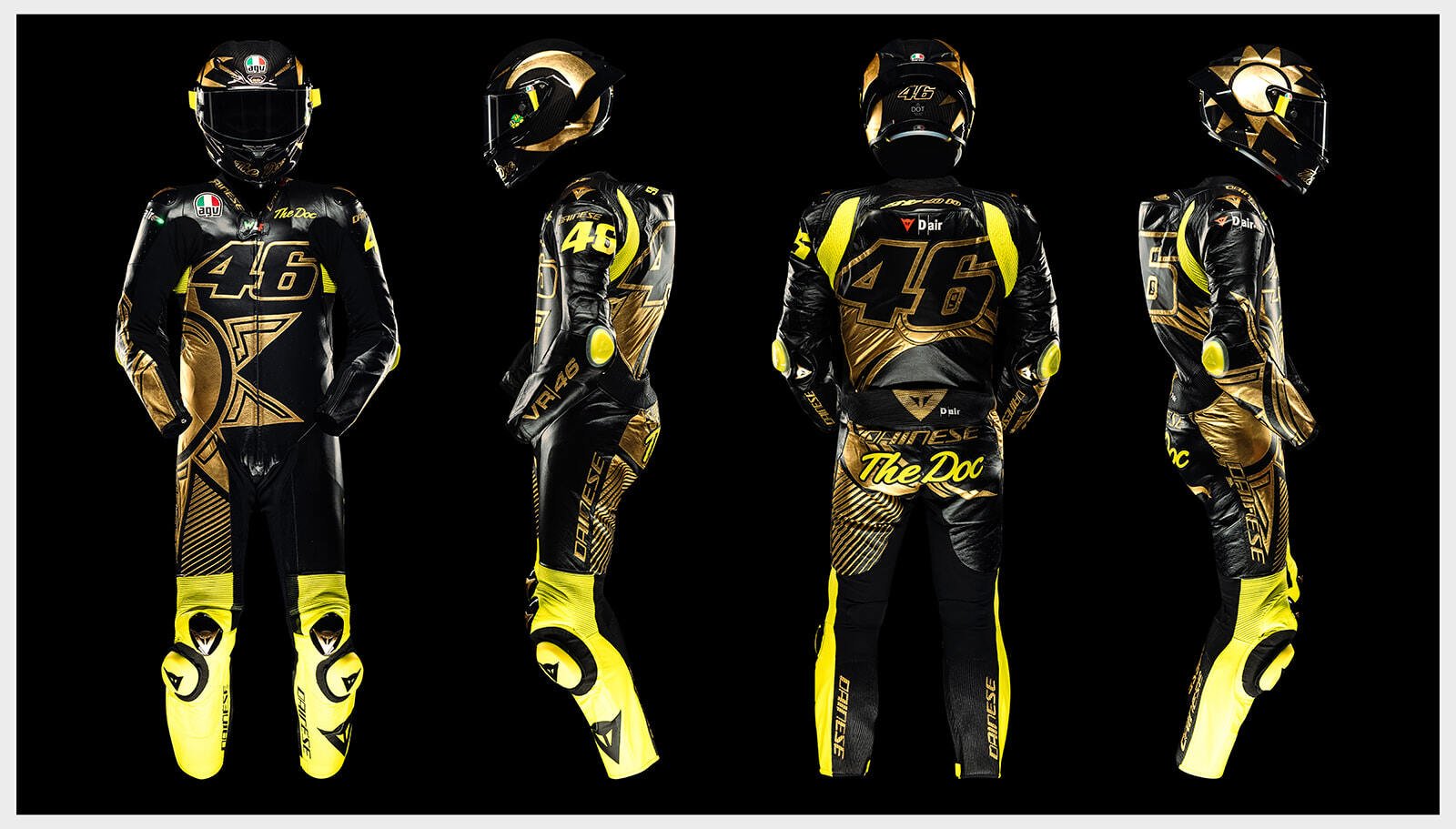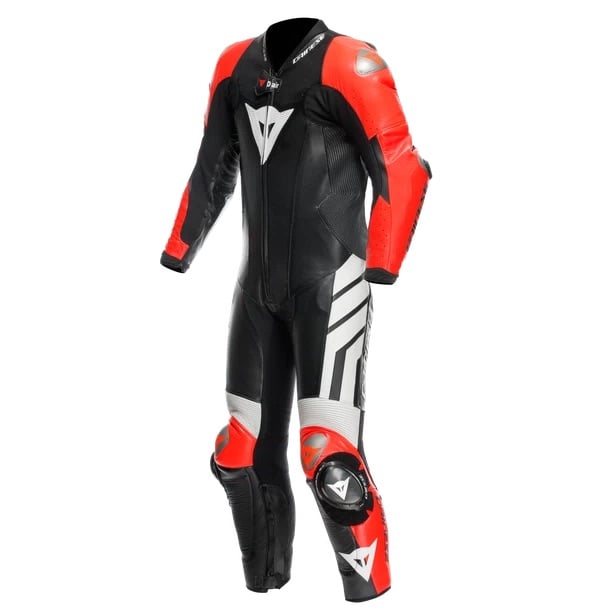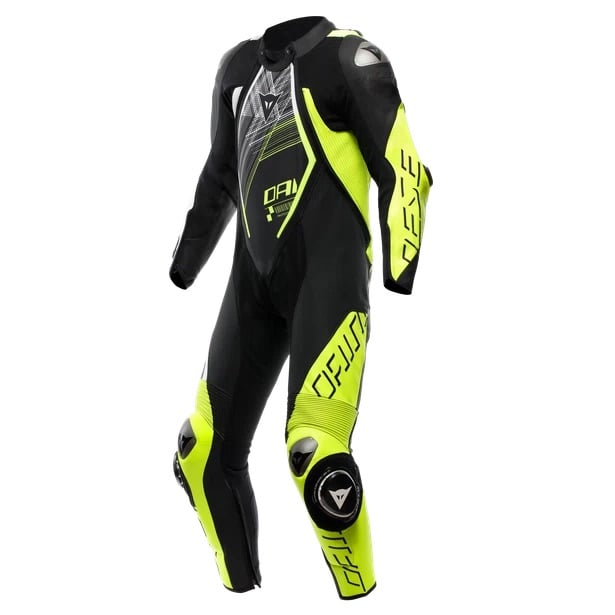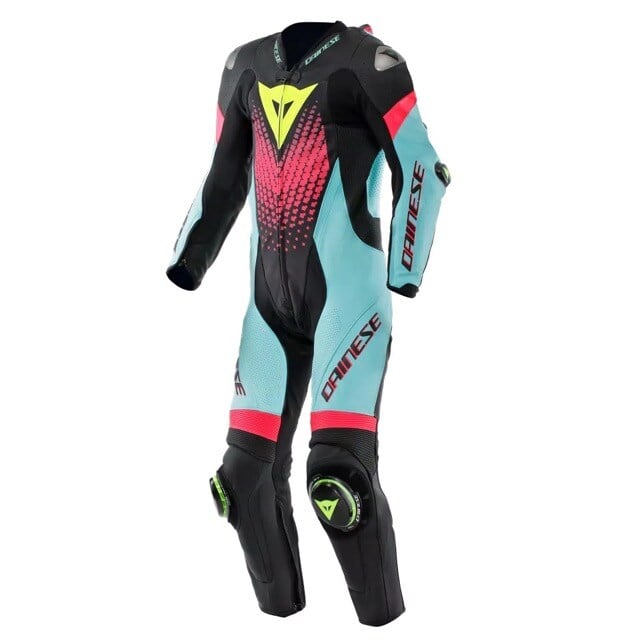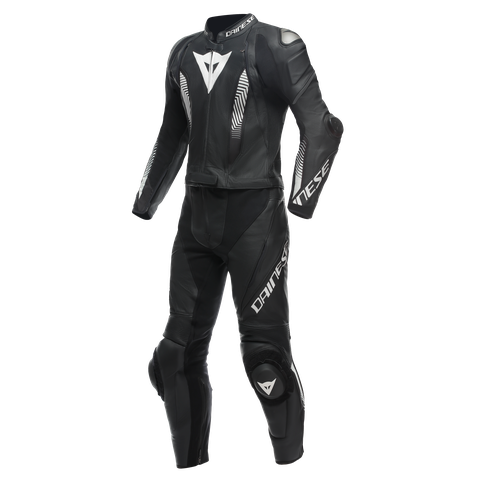Laguna Seca 2005 – Yamaha's 50th anniversary
The year 2005, along with the two-year period 2002-2003, was one of the seasons most distinctly dominated by the rider from Le Marche. One withdrawal in Japan, and then only podium finishes. The second racer in the ranking was almost 150 lengths behind.
Valentino Rossi's 2005 racing attire had significantly evolved from that of a few years earlier. The suit featured metal protectors on shoulders, elbows and knees, while the helmet was the more modern AGV Ti-Tech, with titanium air vents. 2005 was also the year Yamaha celebrated its 50th anniversary. They did so at Laguna Seca and Valencia, with vintage colorways – Motorcycles and riders were yellow and black in the U.S., white and red in Spain.
2015 season – the last worldwide takeover
The 2015 season was the last season that saw a 36-year-old Valentino fighting for the title. It didn’t end as hoped, but it sealed two decades with Rossi as the absolute star, who came in as a boy and grew up to become a seasoned racer, always at the highest level. Without a doubt, one of the longest-lived professional riders ever.
Compared to the attire we’ve just seen, the 2015 one was totally revolutionary. Valentino's race helmet was the hyper-sophisticated AGV Pista GP, a head-safety device that struck a perfect balance between protection, aerodynamic performance, width of field of vision and weight. The suit integrated a D-air® airbag that was already cutting-edge, introduced in competitions in 2007.


